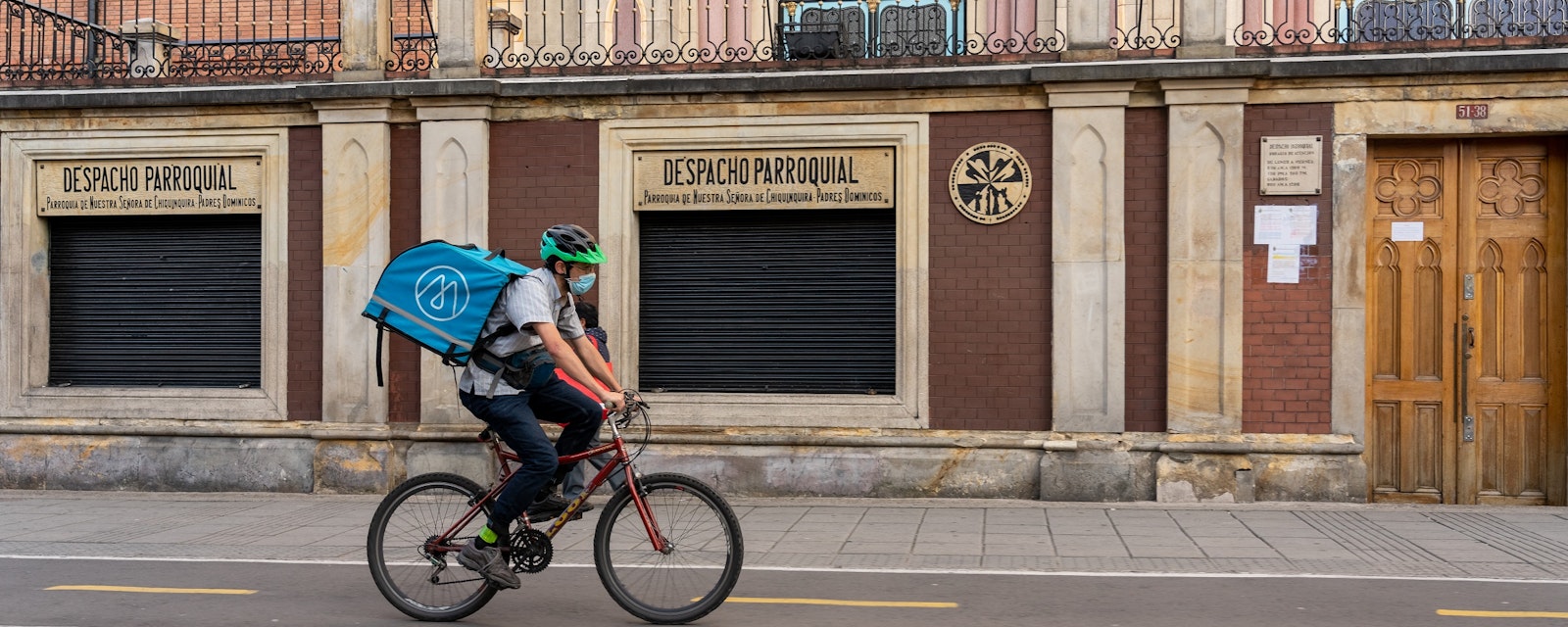Many countries in Latin America opted for stringent lockdowns at a far earlier stage in the spread of Covid-19 than elsewhere in the world. This reflected the much greater risk of medical system overload in the region, as well as the fact that Covid-19 spread to Latin America comparatively late, which gave authorities valuable time to assess the impact of the pandemic in countries where Covid-19 struck initially.
However, the economic cost of hibernating economies has been colossal. Prolonged lockdowns are unsustainable, particularly when some economies were already fragile before the current crisis, while many also face an unprecedented commodity demand and price shock. Another local consideration facing the region is the large numbers of people reliant on daywork in the informal economy, many of whom live in high-density urbanized areas where social distancing is not feasible for long periods.
These factors – early-stage lockdowns and acute economic pressures – mean that some governments are now under pressure to relax restrictions even though a) the peak of infections has not necessarily been reached, and b) testing and tracking capacities are far from optimal.
The response – at least from those governments with a greater grasp of the crisis and capacity to respond – is to consider shifting to a “vertical interdiction” strategy in which differentiated lockdowns are pursued. Under this approach, those at high risk from Covid-19 would remain under tighter restrictions for longer. Below we examine the approaches being examined or taken in three countries - Argentina, Chile, and Colombia – and the challenges they face ahead.
Argentina
Lockdown timeline: a lockdown was imposed on 20 March and is set to expire on 26 April. A further extension is expected.
Exit strategy: while the generalized quarantine is likely to be extended into May, new geographic and business exemptions are being prepared this week. The former are likely to center on areas where there are no reported Covid-19 cases. On the latter, the government is monitoring how sectors newly opened this week are faring in order to evaluate how to further loosen restrictions.
Logistical challenges: it could be difficult to enforce differing restrictions in adjoining areas under the “administered quarantine” plan. Haphazardly applied rules could complicate the situation. Smaller cities and towns are likely to see faster loosening but these are not necessarily places where pressure for a relaxation is greatest. Buenos Aires (city) has already been blocked by a court ruling from introducing special permits designed to allow the over 70s to leave their homes. Finally, the winter and the flu season are approaching.
Political context: President Alberto Fernandez has strengthened his own position vis-à-vis his left flank with his decisive approach to the pandemic, but an extended quarantine could sap his approval ratings. The government is desperate to avoid any outbreak of unrest, which would most likely come from low-income areas around Buenos Aires – this explains Buenos Aires provincial governor Axel Kicillof’s particular unease with the current situation. Kicillof’s decision to invite Cuban doctors to help deal with the crisis is a reminder of the administration’s leftist leanings even if the president himself is more pragmatic. Ultimately, the Left still considers VP Cristina Fernandez (CFK) as their rightful leader.
Chile
Lockdown timeline: quarantine in place from 16 March, with stricter restrictions applicable to specific areas and subject to regular review; 22:00-05:00 curfew in place since 22 March.
Exit strategy: the government has from the beginning pursued what it calls a “dynamic” approach to restrictions (notwithstanding the general state of quarantine and blanket curfew). This involves restrictions being tightened or loosened by municipality (or even sub-municipal level) depending on a set of variables including the incidence of cases per km2, the number of elderly residents, and local health system capacity. For the education sector, a phased return to classes is likely, starting in May.
Logistical challenges: the act of imposing and lifting restrictions poses its own challenges – witness the crowds at supermarkets in Arica ahead of a local quarantine taking effect last week. A patchwork of changing rules could be difficult to operate. Above all, a strategy based on risk stratification requires data; Chile can rely on fairly accurate social mapping but that will be difficult to replicate across much of the region. Note too that Chile has the highest Covid-19 testing capacity in the region.
Political context: the government’s pro-business credentials leave it open to charges that it is putting the economy before public health. Social pressures could increase in low-income areas, making lockdown enforcement increasingly difficult. Even a move to normalcy in waves could create public frustration if it is seen as too slow or uneven. Equally, if the government is seen to delay unnecessarily the lifting of restrictions, it could be accused of attempting to stifle protests.
Colombia
Lockdown timeline: quarantine in place from 25 March and set to run until 11 May.
Exit strategy: President Ivan Duque has been talking about “intelligent isolation” or an “accordion strategy” consisting of multiple periods of intermittent social distancing for some time now but is putting this into practice very gradually. The main focus for now at least is on reactivating the economy: construction and manufacturing will from 27 April join agriculture in being allowed to resume activities (while following new sanitation protocols).
Logistical challenges: the health system is under-resourced, testing capacity is limited, and tracing impracticable if the pandemic re-accelerates.
Political context: opening up construction addresses two related challenges simultaneously because it allows for some economic activity to restart while helping a sector that employs huge numbers of day workers. However, the informal sector accounts for close to 50% of the working population, and cash transfers and food handouts are not reaching it all. The government cannot afford to let quarantines crumble before a flattening of the curve is evident yet hunger protests in poor neighborhoods of Bogota in recent days underscore how delicate the situation already is.





